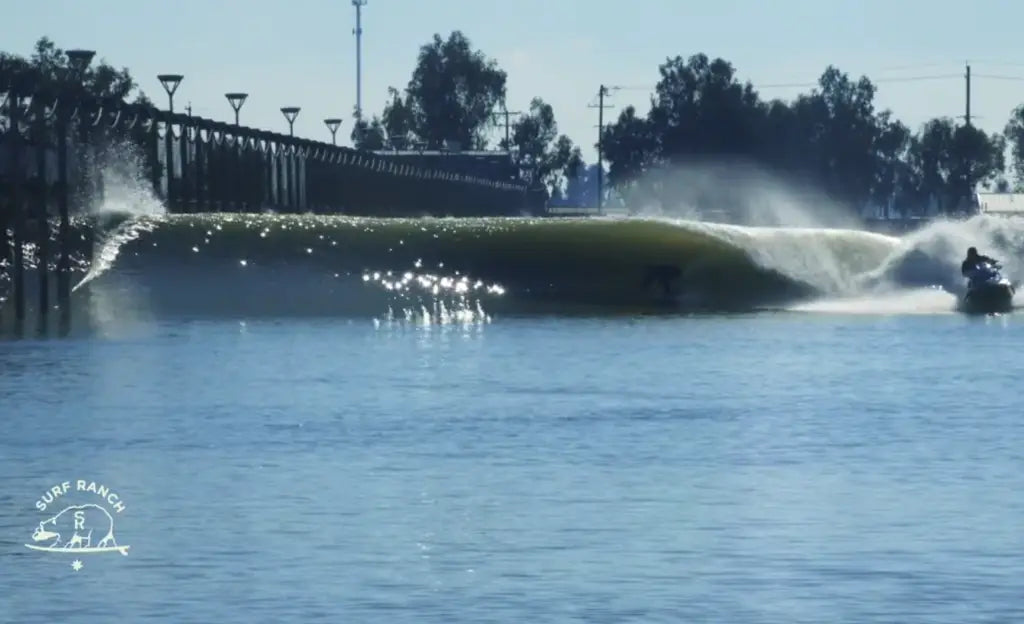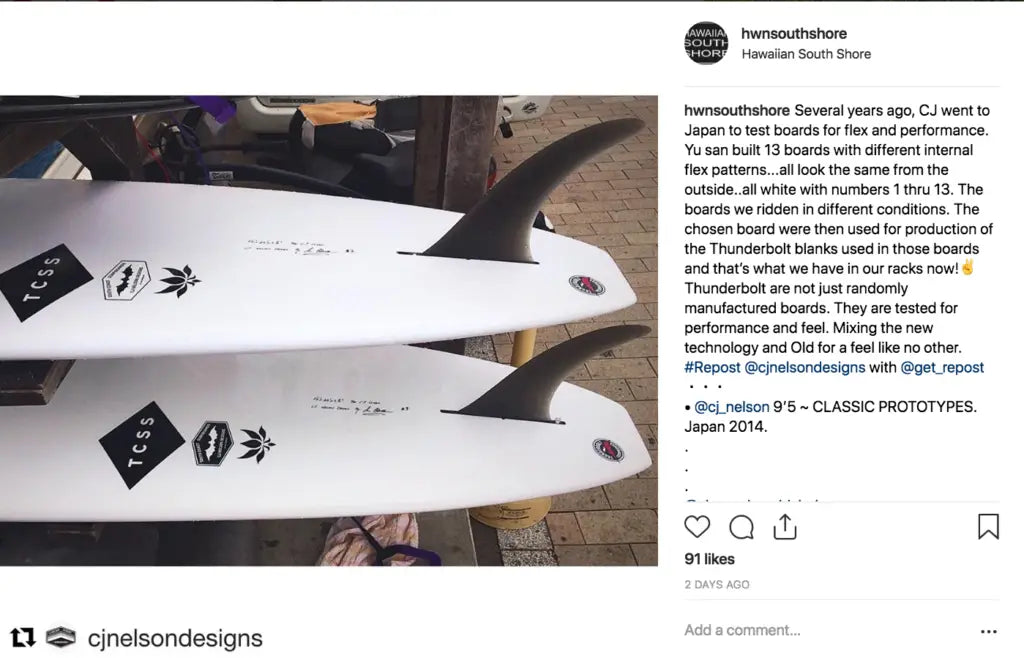Hawaiian South Shore January Newsletter
MY THOUGHTS FOR 2019 AND BEYOND! THE LIFE EXTENDER
David Kelly | Owner, Hawaiian South Shore
As the calendar switches over to a new year, many of us start to think about time and age. Specifically, we look at how old we are and how much time we have left. If you were to ask the average person how long they thought they were going to live, most would probably tell you somewhere between 70 and 100 years. Recently, I listened to a podcast and read an interesting book about the lifetime extender exercise. The author talks about how he decided that he wants to live 156 years so that he can see the beginning of a new century. He lives his life as if he is going to live that long.
The author is quick to point out that he might not actually live to be 156, but even if he doesn’t, he isn’t too fussed about the fact. The point of the exercise is to change your perspective toward life and death, and to stop thinking certain ways because society or science or your family history tells you to. Instead, you choose for yourself how you are going to live your life. If your life expectancy was 150 years instead of 75, how would you live differently? Those in their 50’s would still be in the first third of their lives as young adults! Which means, they would arguably be doing young adult things and living with a young adult mindset. Instead of allowing themselves to become lazy, complacent and out of shape, people would be attacking life with energy and excitement. They’d be training to stay fit, having adventures and seeking out excitement.
The irony of course, is that doing these types of “young adult” things is exactly what keeps people young. Someone once said, “that you don’t stop playing when you get old, but that you get old when you stop playing”. Even if it isn’t possible to live to be 156 years old, the point of this exercise is to help us learn to live as if we were going to. Instead of thinking about life as rapidly coming to an end, we should be celebrating every day we have and planning exciting adventures for our futures. These adventures may include waves, trips to new places or welcoming new members to our family (such as grandchildren). By living as if we have a lot of life to live (but without taking our time for granted) we will end up living our lives to the fullest and staying rooted in the present and being active and healthy. We will eat better and exercise more because that’s what you must do to live to 156. Most importantly, we will approach life with the fresh perspective of a young person, while at the same time benefitting from the wisdom of age and experience.
I really liked and enjoyed what this book and podcast had to say. The reality is that very few of us actually feel as old as we are. As milestone birthdays come and go, it’s often a surprise to us. I know people who are 40, 50, 60 and even 70 that feel like they are still in their early 20’s. I say it’s time we start acting like we are as young as we feel. Let’s start believing that our bodies have a hundred more years in them and that our nagging injuries, aches and pains can be healed through healthy living, stretching and activity. Pretty soon, our bodies will start to react to the messages our minds are telling our bodies and the next thing you know, we will feel younger, not only in spirit, but in body as well.
Whether you are still a young person or someone who is approaching middle-age or even to retire, there’s no better time than now to start living like you’re just getting started in life. Who knows, with a change in perspective and a new lease on life, your best surfing years might still be ahead of you!

BRETT UPDATE ON SURF RANCH
Our store manager, Brett, received a golden ticket a few months ago inviting him to Kelly Slater’s Surf Ranch. The golden ticket was sent to him by FCS for helping Hawaiian South Shore become the most successful fin retailer in our region. Brett just got back from California and is still fresh off his freshwater session. We sat down for a chat to see how good Slater’s waves really are.
You just got back from the Surf Ranch. What did you think of the wave?
It was definitely one of the most fun and longest waves I have ever surfed. I could have surfed it all day long even though the water was pretty cold.
How many waves did you get to ride?
I think I surfed a total of six waves, but only one where I made it all the way down the line with a little bit of a barrel.
Most of my other waves were fun, but shorter from being in the wrong spot when the wave would start to barrel. Every surfer in our group was given three or four priority waves per heat so you would get to be the first one to catch a wave.
You could then catch other waves only when the surfer with priority wiped out and you were the next one down the line. This was called “poaching.” I was able to poach a few here and there.
The first wave I caught was poached, which I was glad about because you don’t want to kook it right away with everyone watching. The pressure of being the first one in line with priority is one thing but having that be your very first wave ever would be pretty overwhelming.
What board did you ride, and how did it go on the waves there?
I surfed a 5’10” FireWire Cymatic. I went up quite a bit in volume from what I normally ride. I was wearing a wetsuit, which added weight and I was surfing an unsalted pool, so there was less buoyancy. I’m super glad I went for more volume, because it definitely helped.
Describe the experience of surfing in the middle of farmland hundreds of miles from the ocean?
When we first landed in LAX there was a guy who randomly asked me, “Where you headed, the moon?” I said, “Yup!” He then asked, “No really, where you headed?” I told him I was going to surf Kelly Slater’s wave pool in Lemoore, California, and he said, “Jesus Christ, you are headed to the moon!” I was like, “Yup haha.”
We drove from LAX to Lemoore and the scenery was so beautiful, but unlike any scenery you would image on any other surf trip. It’s crazy, the Surf Ranch has probably brought more surfers into this desolate part of the world than ever before in history.
We hear the water gets pretty cold in Lemoore, this time of year. Were you in a wetsuit?
I think the water temp was easily in the 50’s, so yeah, I wore a wetsuit. It was an old 3mm Ripcurl and it worked perfect at the wave pool even after all these years.
Slater’s wave is pretty much perfect, but it’s in a pool and some people think that cheapens the experience. What did you think? Would you surf that wave every day if you could?
I think it enhances the experience. Most other spots that have near perfect natural waves have obstacles that you need to overcome in order to catch them, like crowds, wind and lack of swell. Kelly has done a pretty good job of eliminating most of those obstacles, so there is really nothing getting in between you and that perfect wave. You have the ability to take your surfing to a whole new level.
The wave also has its limitations. For instance, you cannot see down the line while surfing Kelly’s wave. So, you have to rely on someone on a jet ski yelling at you to “get down low!” when a barrel section is approaching.
A few days after getting back, I was surfing Tracks and tried to pull into a barrel that closed out on me. I jokingly thought to myself that it would have been nice to have the same guy on the jet ski coaching me through that one, the way he coached me through the barrel sections at Kelly’s Surf Ranch.
But then again, it’s a pretty damn good feeling when you make a barrel all on your own.

WHAT’S NEW, WHO STOPPED BY AND SOME UPDATES.
Guy Hagi came in with the kids just before Christmas to grab some fins for his new asymmetrical he’s testing out.
This was such a cool Instagram post by CJ Nelson. It shows the demo boards he used to test for Thunderbolt Technologies. When I heard about how Yu San the man that pretty much came up with this technology, I thought it was really awesome. Yu San has known CJ since they were kids and surfed together. When Yu approached him, CJ was totally against the ideas of this type of construction, but after many months of convincing him to just demo it. If CJ didn’t like it, no problem, because Yu San was willing to go back to the drawing board. Yu San being a pro surfer himself, knew he was on to something. Anyways check out the post, I pasted here.
Several years ago, CJ went to Japan to test boards for flex and performance. Yu San built 13 boards with different internal flex patterns…all look the same from the outside, all white with the numbers 1 thru 13. The boards were ridden in different conditions. The chosen boards were then used for production of the Thunderbolt blanks used in those boards and that’s what we have in our racks now! Thunderbolts are not just randomly manufactured boards. They are tested for performance and feel. Mixing the new technology and old for a feel like no other.
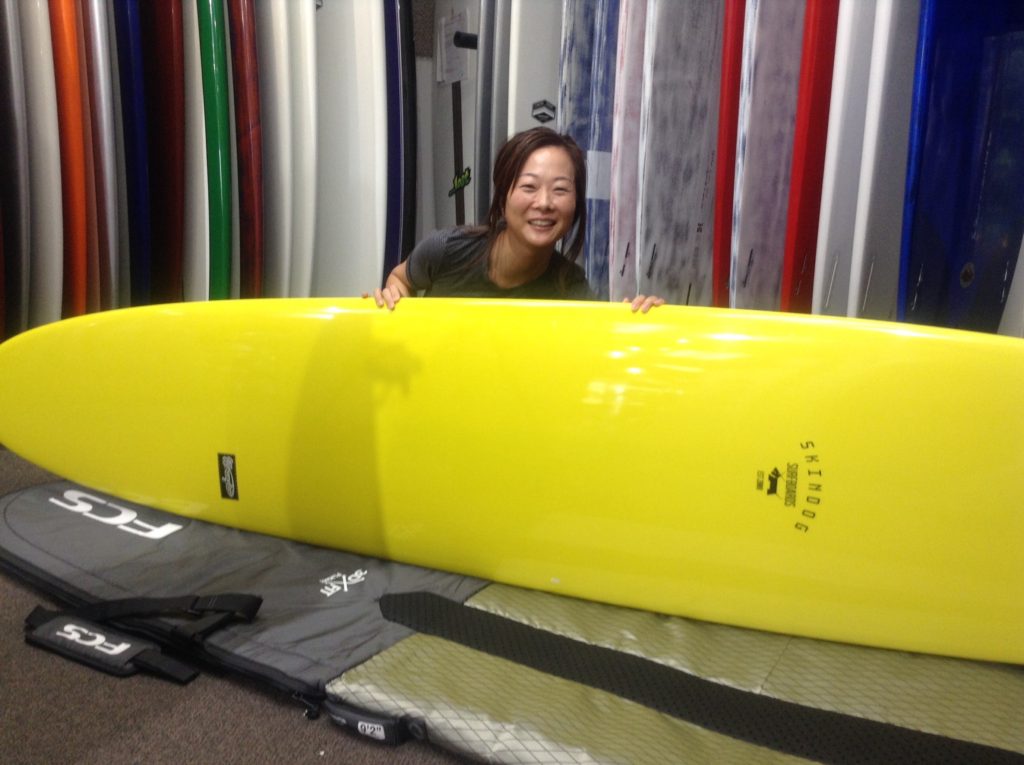
HAWAIIAN SOUTH SHORE MEMBER OF THE MONTH
Kana
Our member of the month is Kana and she came in searching for a board with her husband. They just moved from the mainland and she’s been surfing Waikiki.
She wanted to replace her heavy fiberglass board, since she walks to the beach and it’s super heavy, plus it’s hard to maneuver the board.
After a long discussion, I found that that she just got back into surfing and wanted a board that was more advanced than what she has now, but not too difficult to grow into. I recommended the Thunderbolt Technology Ben Skinner Wrangler model. It’s a single fin board perfect for Waikiki and is light so it’s easy to carry to the beach from her house. Since she’s a beginner, moving to an intermediate level, she’ll be able to grow into this board.

When and why did you initially get into surfing?
I first tried surfing 12-13 years ago, when my husband and I were visiting Japan. He had been surfing since high school, so we had access to surfboards and it was summer time in Izu prefecture.
Did you have a time period you laid off from surfing? If so, when and why did you start back up?
Never had easy access to the ocean, so I was only able to sporadically attempt surfing. I bought a board, but then just had it in storage for 7-8 years and driving 5 hours to get to the ocean got too much.
What is your favorite thing about surfing?
I love being in the ocean, so even just floating on the board and watching the sea turtles and dolphins is fun. I haven’t had a whale or seal sighting yet while on board, so waiting for that.
Where is your favorite place to eat after surfing? What is your favorite item on the menu?
Husband always does the cooking after surfing. I haven’t decided on a favorite, but it’s all good.
What other hobbies do you have besides surfing?
Travel, food (eating it, not making it)
What type of work do you do?
Veterinarian
Tell us about the board you recently purchased from us. What model and size is it and how do you like its performance?
9-2. Wrangler, skinner. I’m not good enough yet to know for sure, but I feel like it’s easier to turn compared to heavier boards that I’ve been on. I think I was able to avoid an accident because the board is easier to turn.

YOGA TALK
Our resident yoga expert, Kilty Inafuku, leads numerous yoga retreats around the world each year. She also has a series of luxury women’s weekend retreats here on Oahu. Kilty has a retreat coming up January 18-21, so we thought we’d have a quick chat with her to find out what happens at her Women’s Weekend Retreat.
Tell us a little bit about how you got started doing retreats here on Oahu?
Well I grew up on Oahu and have been teaching yoga here for the past seven years. A lot of students (especially ones with families or work responsibilities) have told me in the past how they’d love to do a small, intimate yoga retreat here on the island, instead of having to fly somewhere and take a week off to go to a big retreat somewhere else. So last year, I decided to start a series of weekend retreats for women here on Oahu, with a maximum of 12 participants at each event. We did our first one last January and everyone had a great time. In fact, three of the ladies signed up straight away for the 2019 retreat (the one later this month)!
So, these retreats are held every January?
Well that was the original plan, but so many people came to me and told me how excited they were about the retreats after hearing about the first one, that I decided to do them twice per year. We had one in July as well.
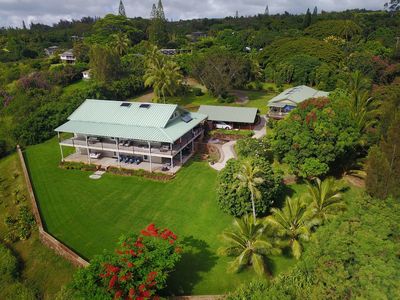
Where are these retreats held?
I wanted to have a nice balance between a small intimate setting, but also somewhere that was comfortable and beautiful and luxurious. A friend recommended a great property up in Pupukea on the North Shore. It has a big house and a cabin on the grounds, so we can all stay together and spend time together between activities. The property is up on the hill with breathtaking ocean views, so we can see waves breaking along the entire coast and whales spouting in the distance. It’s surprisingly peaceful.
What do you do at the retreats? Just hours and hours of yoga?
Well, we definitely do a couple sessions of asana (physical yoga poses) each day. Usually one longer session in the morning and a mellower, shorter restorative session in the evening. Then we also have a number of other activities each day, such as guided meditations, pranayama (yogic breathing) sessions, workshops, and guided discussions about self-care, self-empowerment, social justice and community issues. There’s also some down time in case you want to jump in the water or go for a hike, read a book, take a nap, you name it.
Wow, that sounds like a really involved weekend! Is it only for people who are already yoga experts?
Not at all! At each retreat we have had some attendees who have been practicing yoga for years and others who are relatively new to the practice. Some of the ladies have shown up nervous that they weren’t going to be flexible enough to do a “yoga retreat,” but by the end of the weekend they realized that yoga is not just body focused. It’s about practicing self awareness of your movement, thoughts and breath. Everyone is at a different level of yoga and has different strengths and weaknesses, but we are all on a journey of growth. The point of this retreat is for us to come together and share that growth journey with each other, regardless of whether or not we can touch our toes!
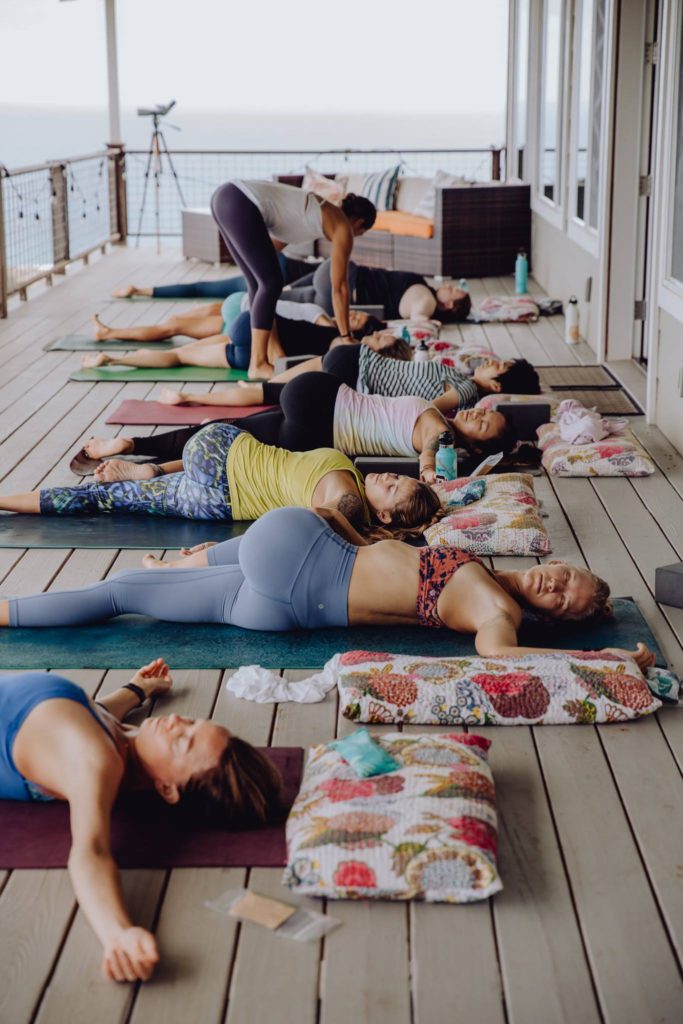
It sounds like a lot of the focus is on how women can care for themselves and be healthier and happier people.
Definitely! No matter what roles we have as mothers, daughters, wives, girlfriends, employees, CEOs, etc. We women will always be able to care for others better if we first learn to care for ourselves and learn to communicate that. This retreat is a chance to remember how important self-care is. We take this time away from busy day-to-day life to recharge our batteries and refresh our spirits. The event also includes amazing farm-to-table meals prepared by my fellow Lululemon ambassador, Hannah Vernon of Homecooked Love. Plus, we bring in a massage therapist and all receive bodywork! The retreat is half yoga/half self-care and a great way to set the tone for the new year!
Well that sounds like an amazing weekend. Are there any spots left for this month’s retreat?
There are a couple of spots left, but they are filling up fast! You can find more information at www.kiltyyoga.com/womens-retreat. html.
Thanks, Kilty! We hope you all have a great time on the North Shore!
NEW AND SUPER-HOT!
Getting Groovy with Rob Machado’s NEW Firewire Seaside. Rob Machado has been one of surfing’s most stylish surfers for three decades. When Cardiff’s favorite son started shaping, it was only a matter of time before we all sat up and took notice. Not surprisingly, Machado’s quiver of shapes is heavy on flow and fun. Rob was one of the first world tour guys to fully embrace the “ride everything” ethos. His performances on single fins and fish shapes had a lot to do with the fact that they are now universally accepted as a legitimate alternative to the high-performance shred stick. When Rob teamed up with Firewire to create a line of boards, the brand jumped at the chance to have both his name and his ideas for fishy shapes in their catalog.
While all of Machado’s boards have gained loyal followings, the Seaside has proven to be the most popular. The Seaside is slightly refined to take on the Go Fish, Rob’s retro fish shape. This updated version has dropped a little bit of area from the tail, narrowed the swallow and created a rounder template for more maneuverability.
Interestingly, the Seaside (which is named after Rob’s home break in Cardiff, California) is a dedicated quad, rather than having the option to be a quad or a twin fin. This should give riders an indication that although the Seaside maintains the traditional fish shape, it’s intended to be a modern high-performance version that doesn’t sacrifice the classic fish flow and speed of course.
The board is built with Firewire’s Helium construction which makes it light, flexible and responsive. While Rob has ridden the shape in draining Tahitian barrels. Most people like to use a fish in small beach breaks and points, since the Helium helps the board to feel alive in smaller waves.
Of course, when we saw this board hit the market, we knew we had to get our hands on some. We put in an order with Firewire and before the boards even arrived in the shop, we’d already sold half the order. When the shipment arrived, the other half sold out in less than three days! Clearly, we weren’t the only people excited about this board. We ordered another shipment to make sure everyone who wants one can get their hands on a Seaside!
Even though summer is now over and the focus has turned to the big waves of the North Shore. The reality is that winter is a hit-and-miss season with lots of down days between XXL swells. If you are looking for something to fill the gaps between days at Pipe and Waimea, Rob Machado’s favorite fish shape just might be the thing!
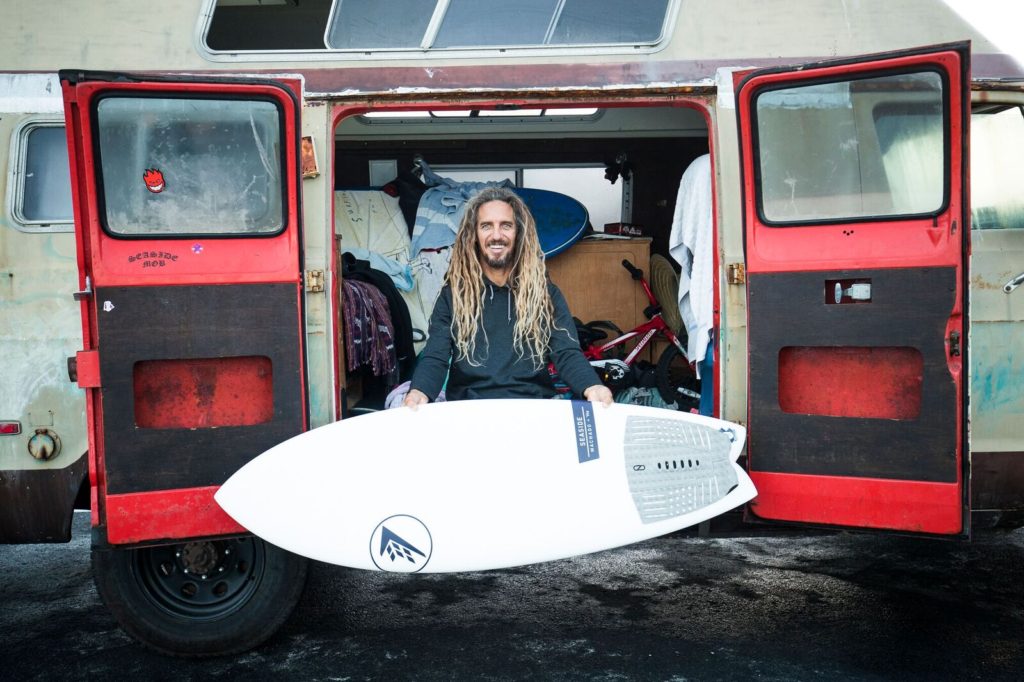
SURF TERMS THAT YOU MAY OR MAY NOT KNOW OR UNDERSTAND
Surfers have our their lingo and it can be pretty confusing for non-surfers or even the most experienced wave riders. I often have people in the shop asking me to explain some of the more fundamental surf lingo. Here are four surf terms I’ve defined.
What is a wind swell? And what is a ground swell?
You often hear people at the beach referring to wind swell and ground swell and saying things like “Hmm, the waves are a bit bumpy and weak. Looks like we only have a bit of wind swell in the water,” or “Wow, that ground swell has really filled in.” But what exactly does this mean?
Waves are generated by wind blowing over the surface of the water and when they are first generated, they tend to be somewhat weak and disorganized. The farther these waves travel, the more organized they become. They are all moving at slightly different speeds and as waves catch up with each other they join to create more powerful waves. As the waves join, gaps are created between them. These gaps are measured in seconds and referred to as period. For example, a swell that has only traveled a few feet from its point of origin might only have one or twosecond periods between waves. After traveling hundreds of miles, that period may have risen to eight or nine seconds because numerous waves have joined together.
The farther a swell travels and the longer the period is, the faster and more powerful the swell becomes and the farther below the surface the waves extends. Not all swells have the energy to travel long distances. As swells travel and join, the period increases, but the height of the swell decreases or decays. Swells that are generated by light to moderate local winds don’t tend to get very big and therefore decay quickly. The period on these swells might get up to around 10 seconds if they travel far enough, but not much higher. These swells usually fade out after traveling short distances. These swells are referred to as wind swells and tend to be weak and disorganized. They can still be valuable for surfers, if they impact a surfable coastline. Typically, they don’t tend to be super great swells.
Ground swells on the other hand, are generated by big storms and are able to travel long distances. As the period of these swells increases into the double digits, the swells become extremely powerful. They begin to exhibit the “blue corduroy” lines that we are used to seeing marching into the North Shore during winter. Ground swells typically have periods ranging from 11 seconds to 25+ seconds. The longer that period gets, the faster and more powerful the waves become and the farther below the ocean’s surface they extend. A 10-second period swell will only begin to feel the ocean floor at around 256 feet. Whereas a 20-second swell will feel the bottom at more than 1000 feet. Therefore, we refer to long-period swells as ground swells because they are feeling the “ground” of the ocean floor sooner. They often bend in specific directions based on the bathymetry of the ocean floor.


